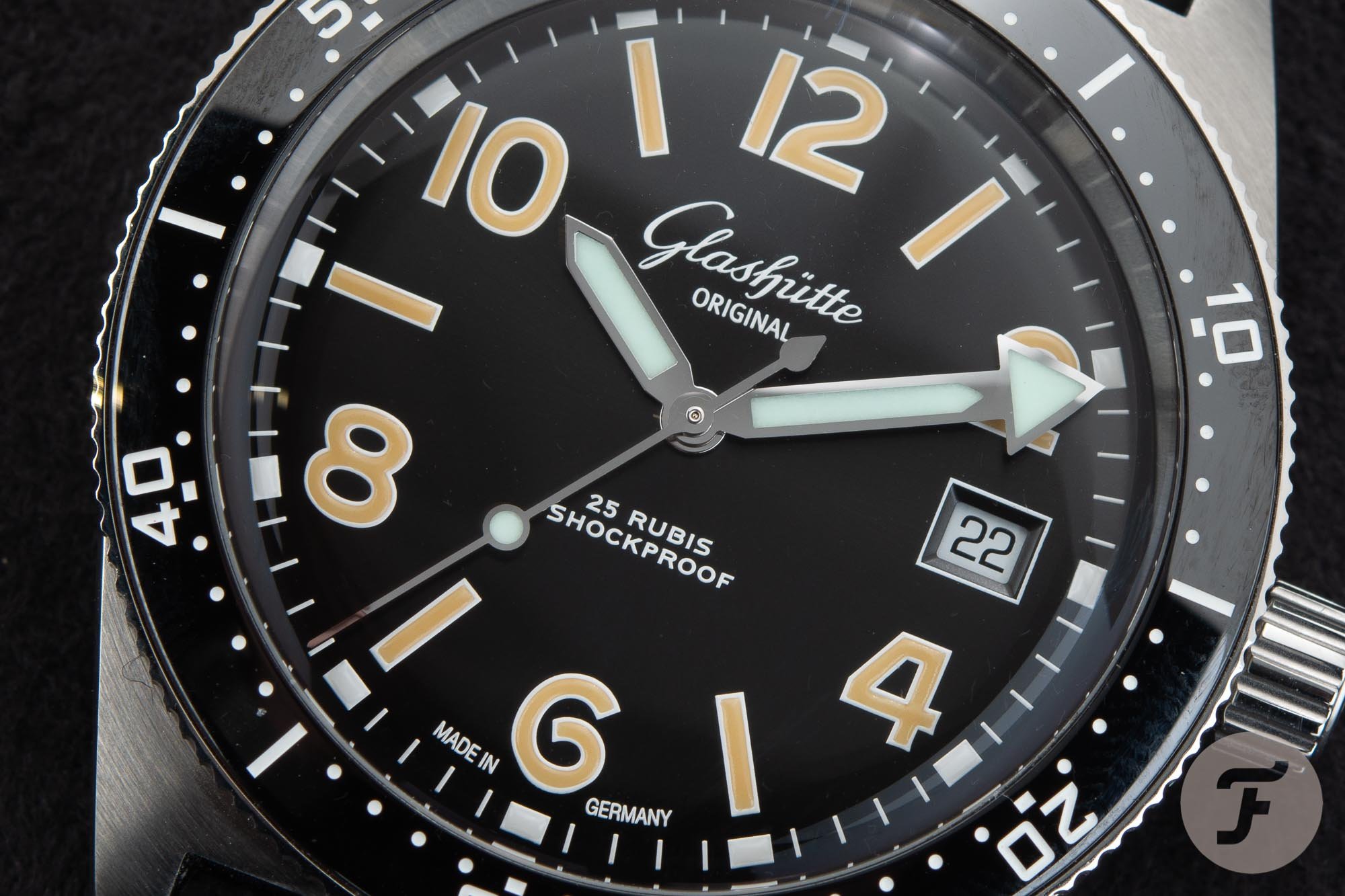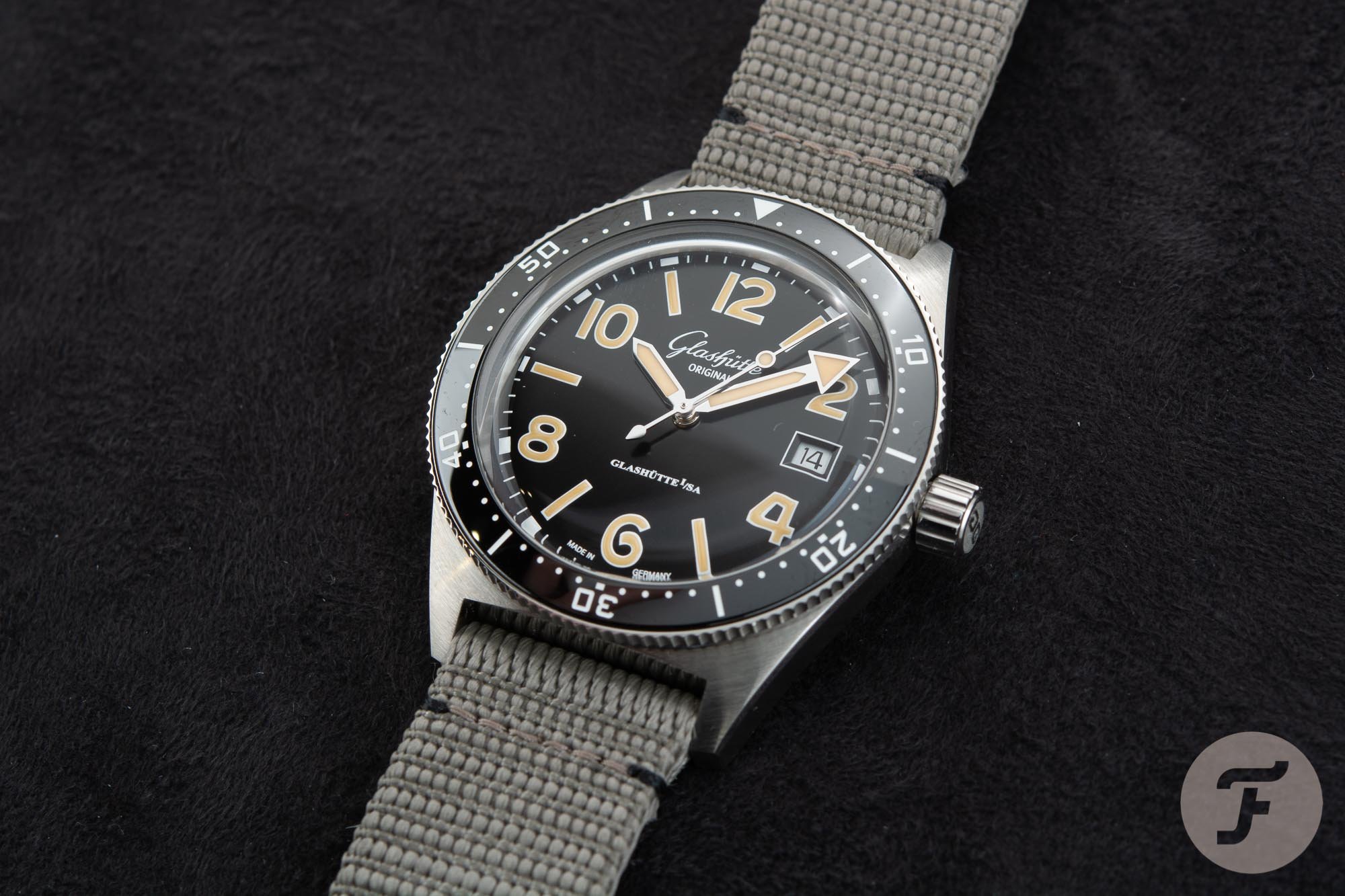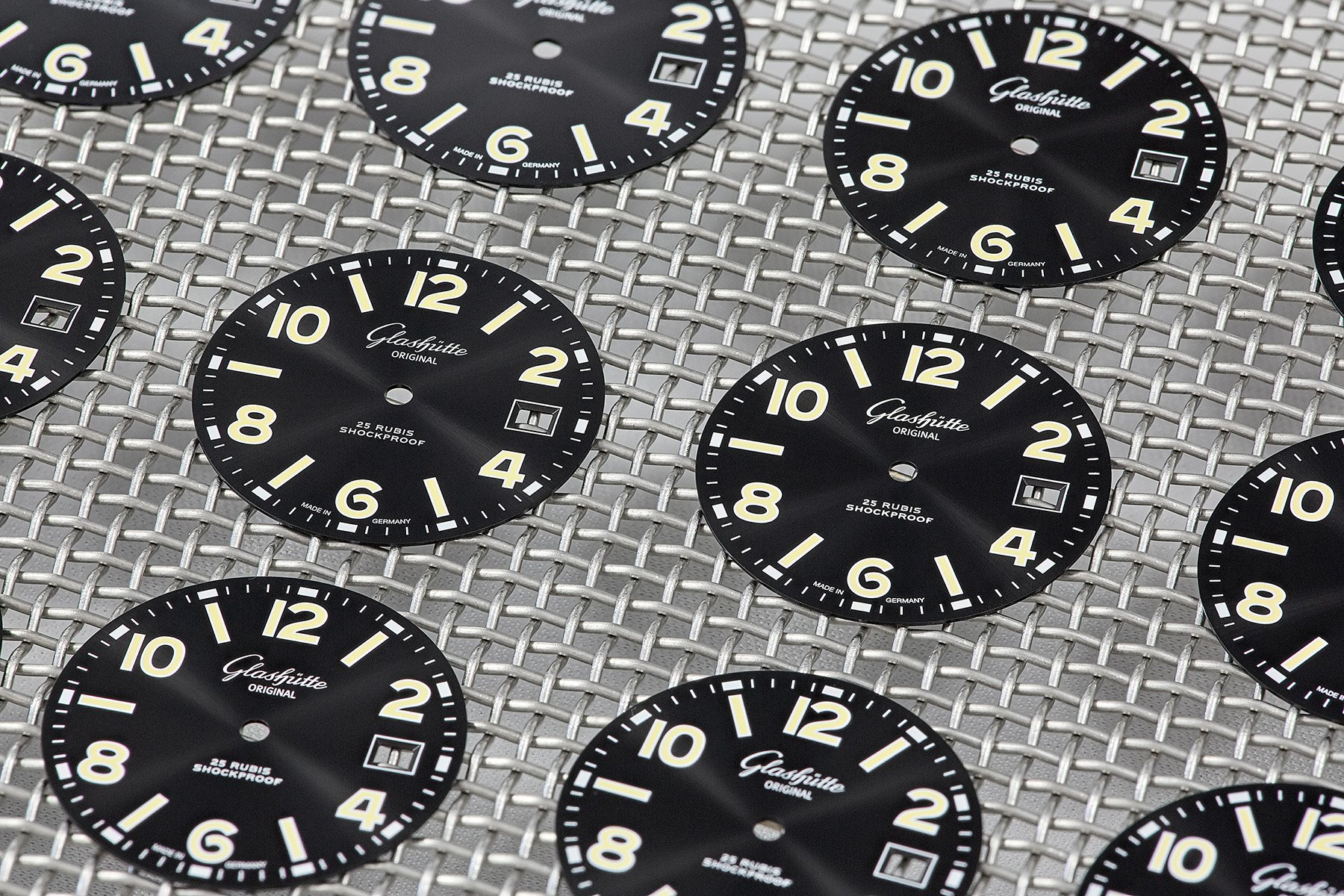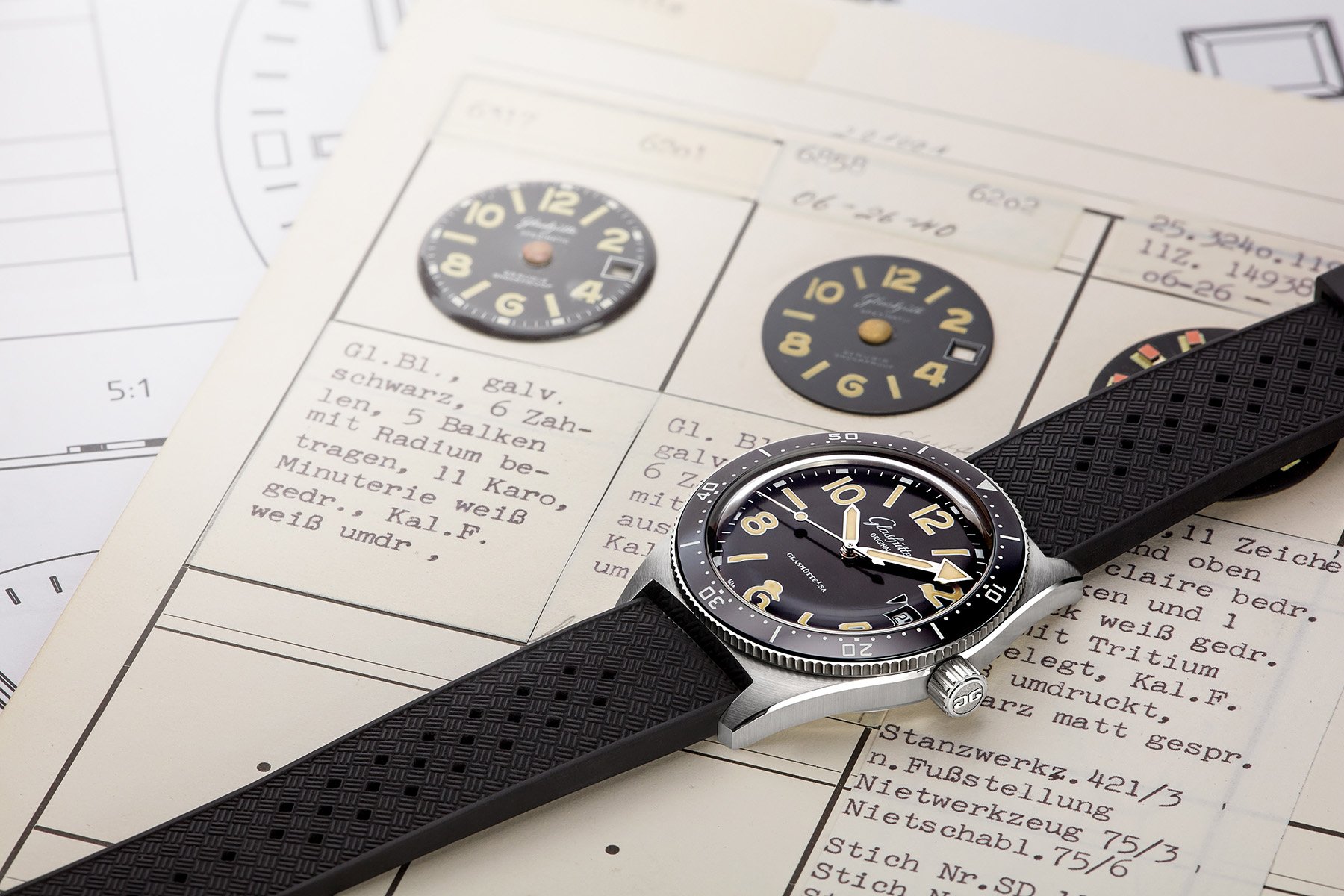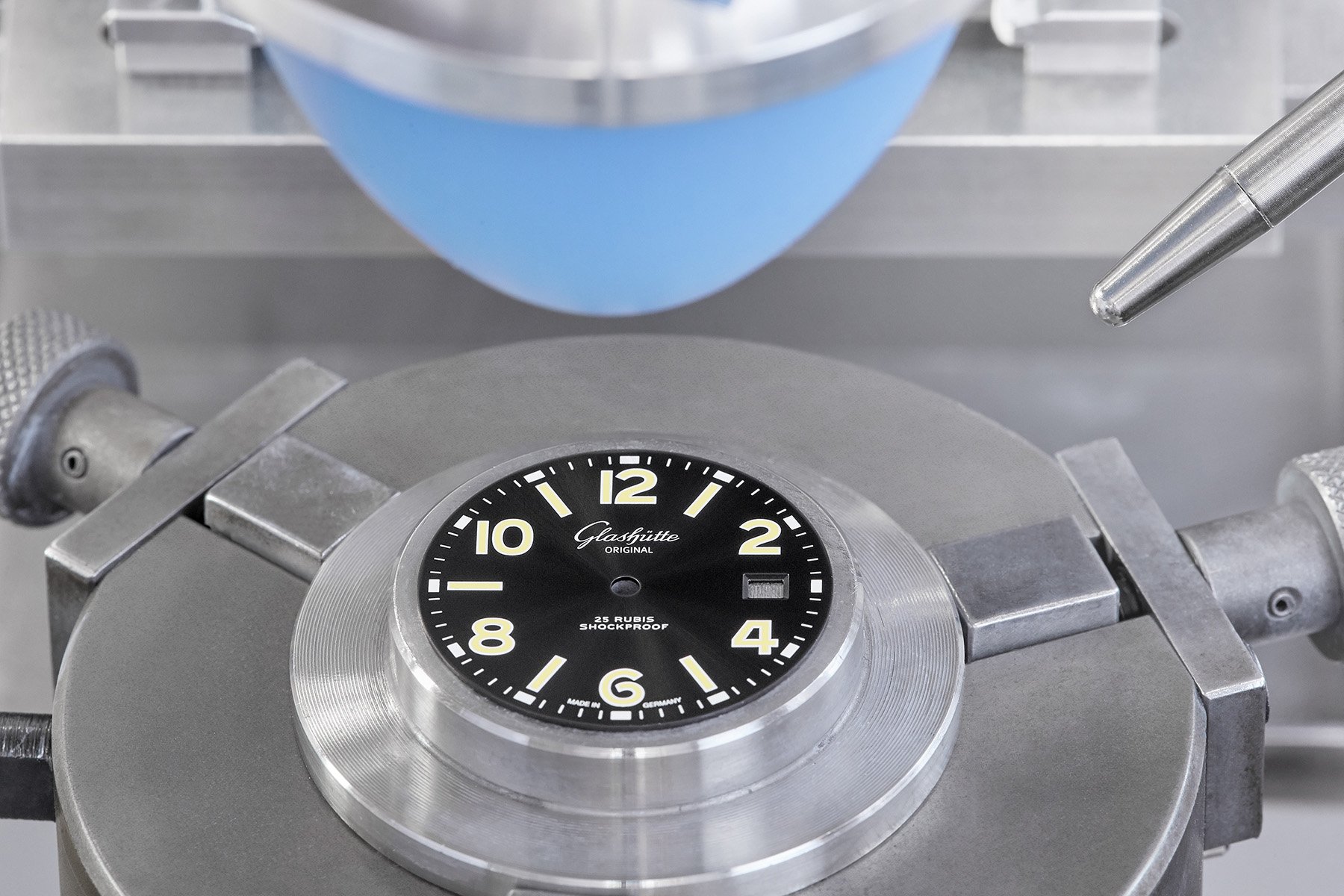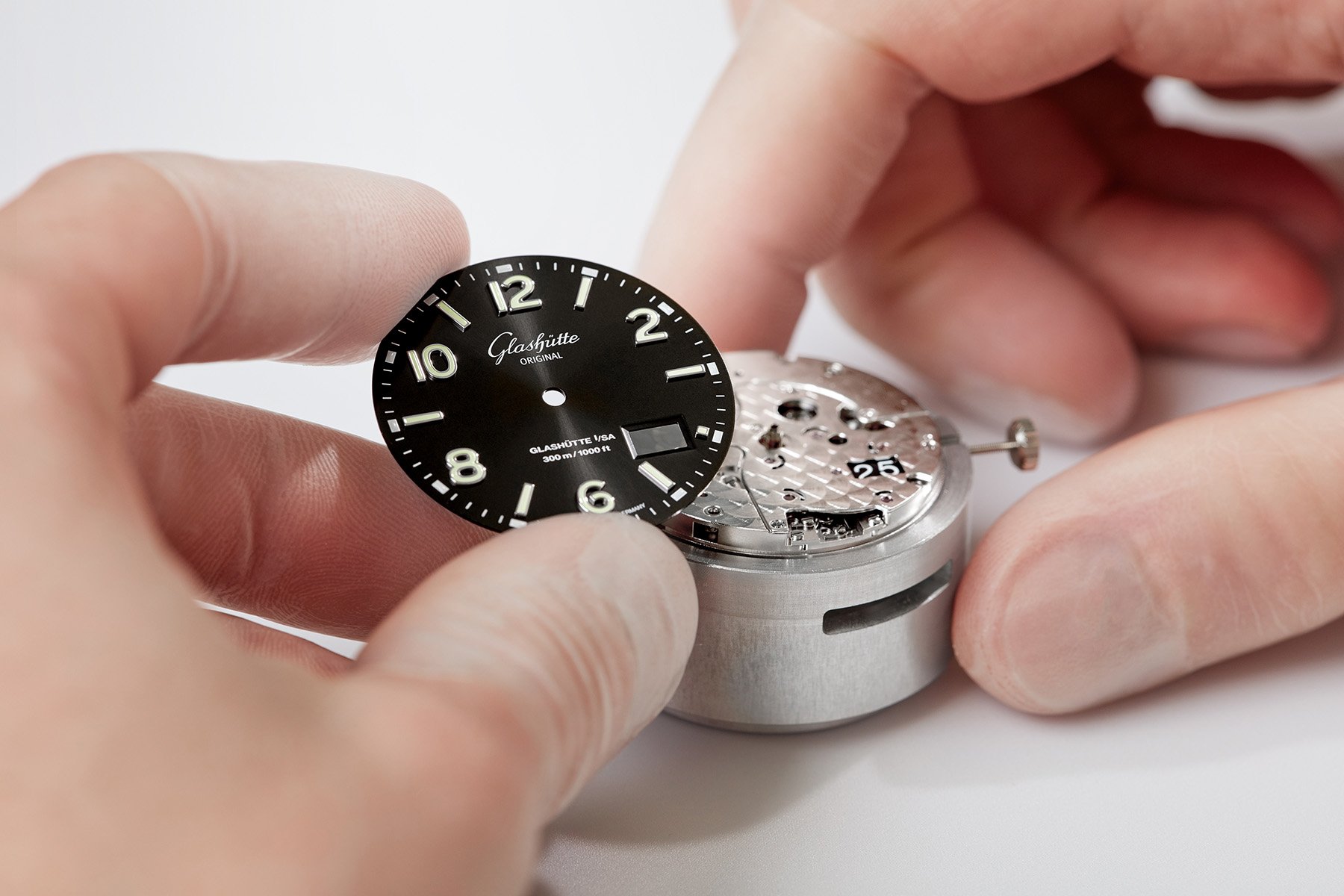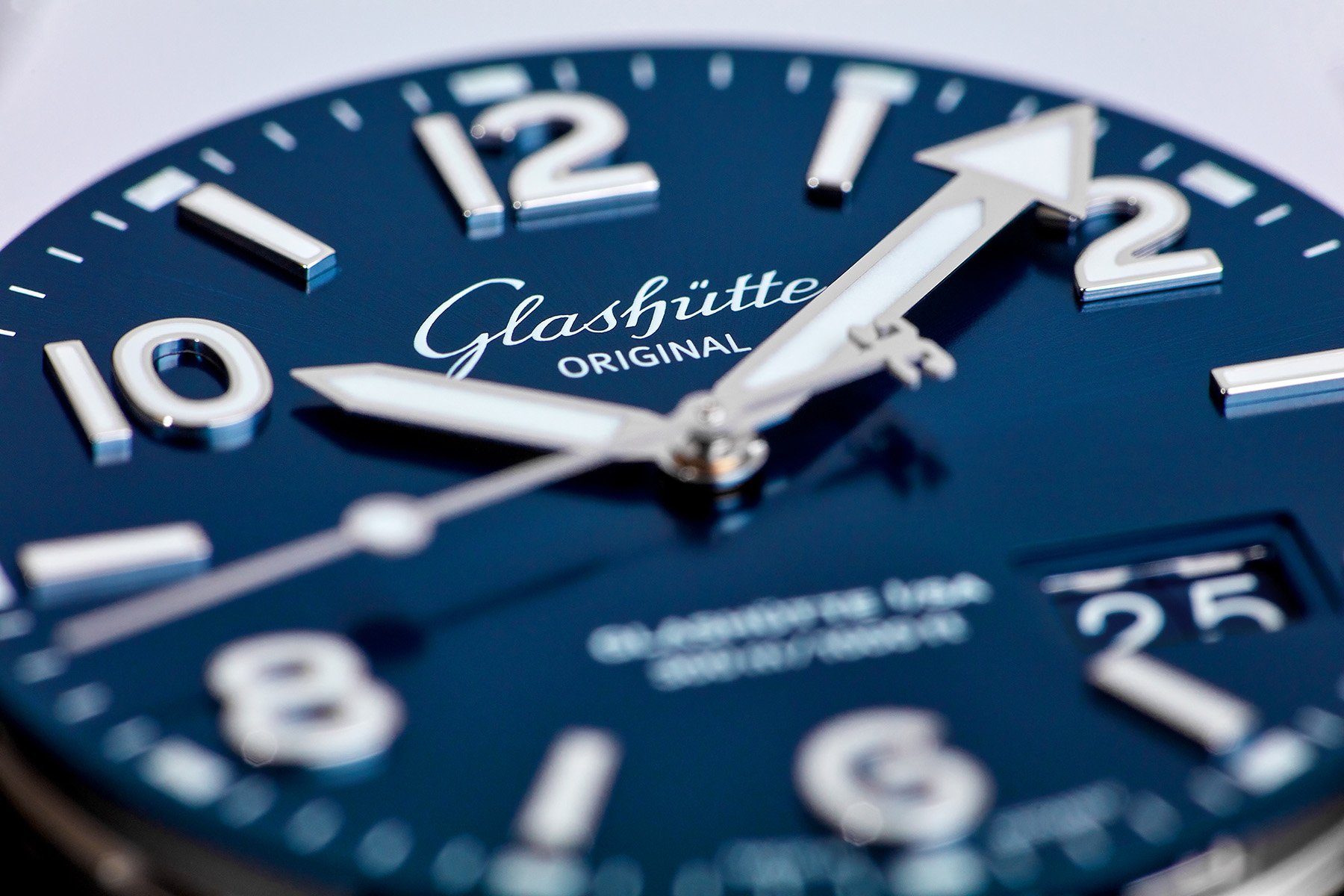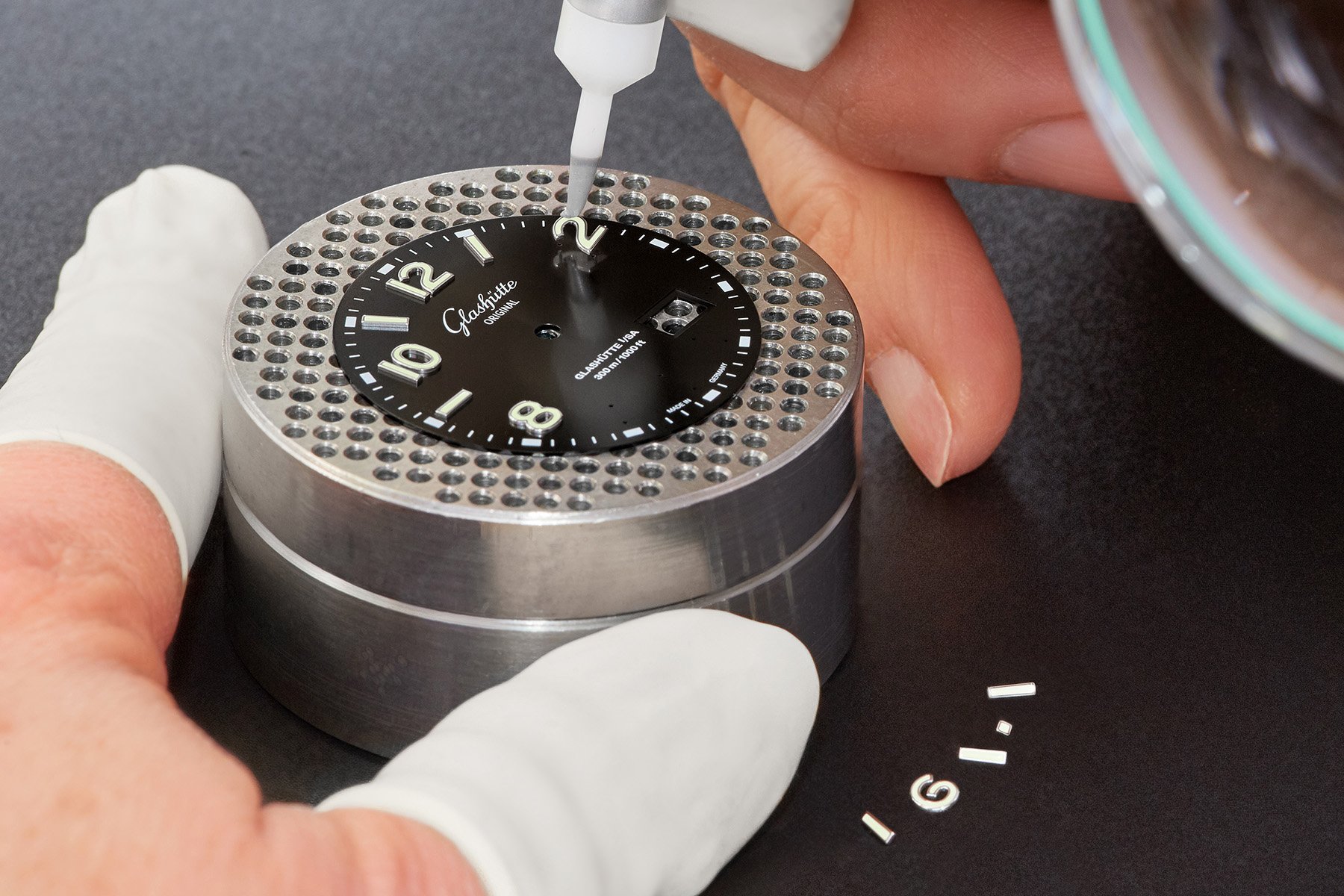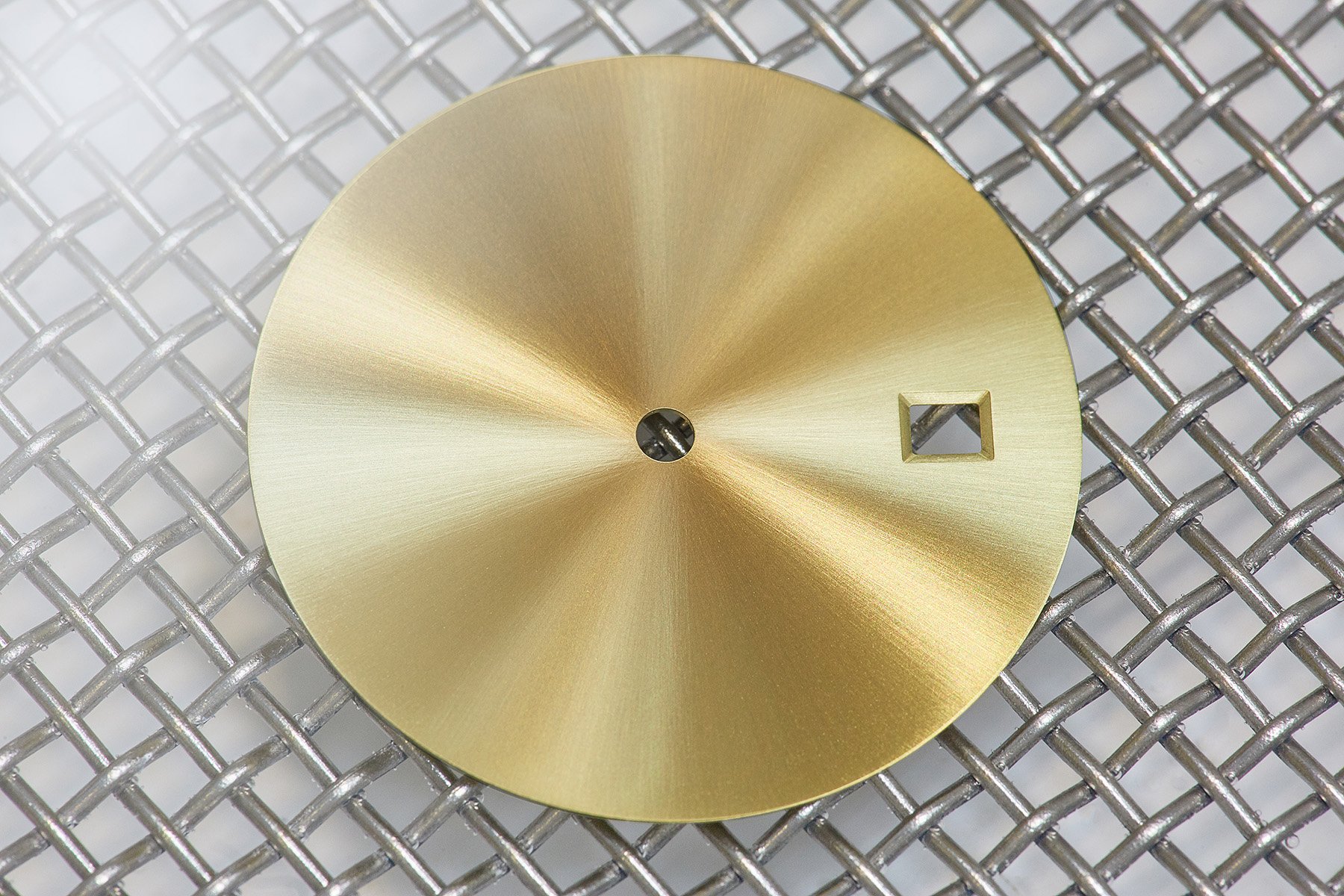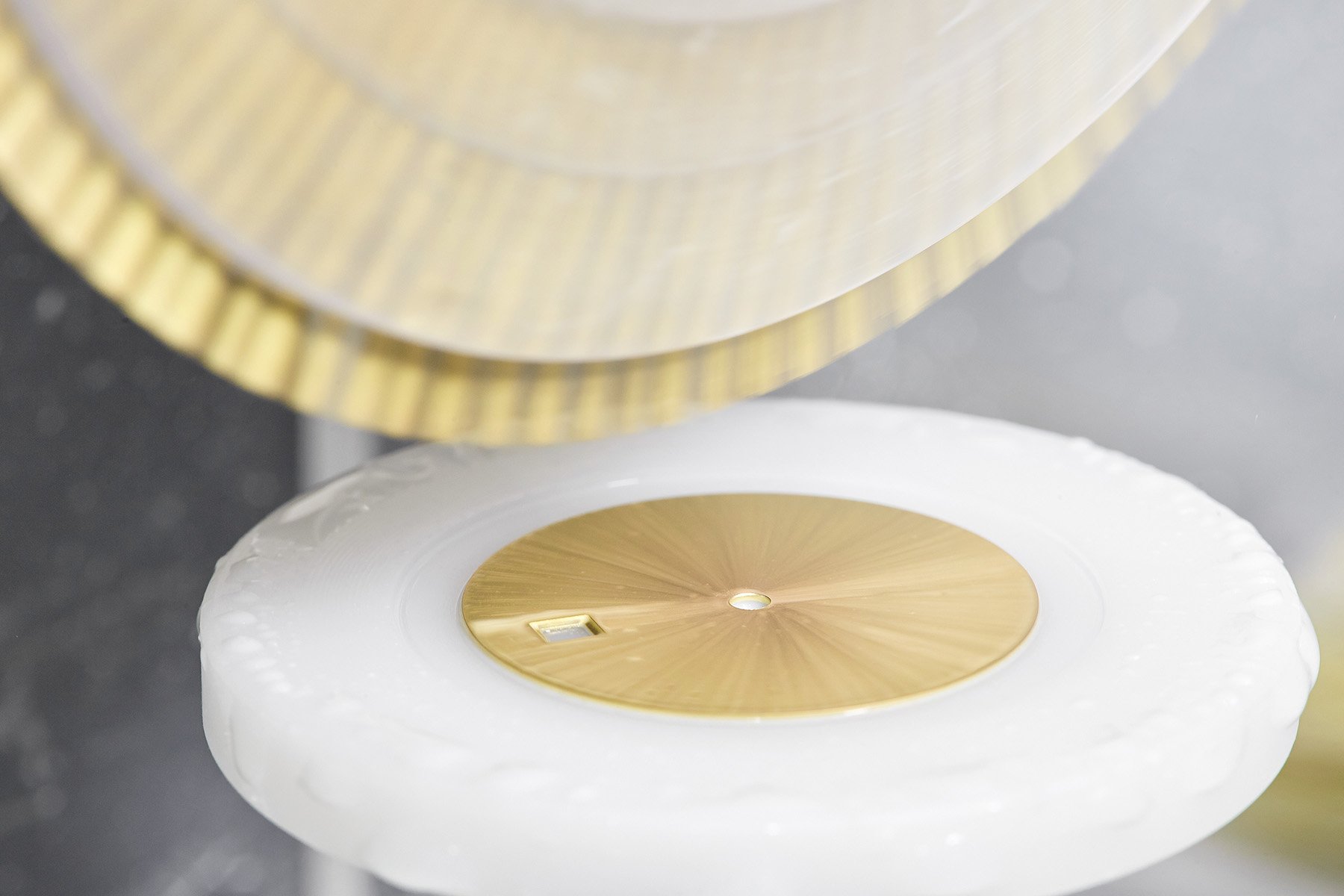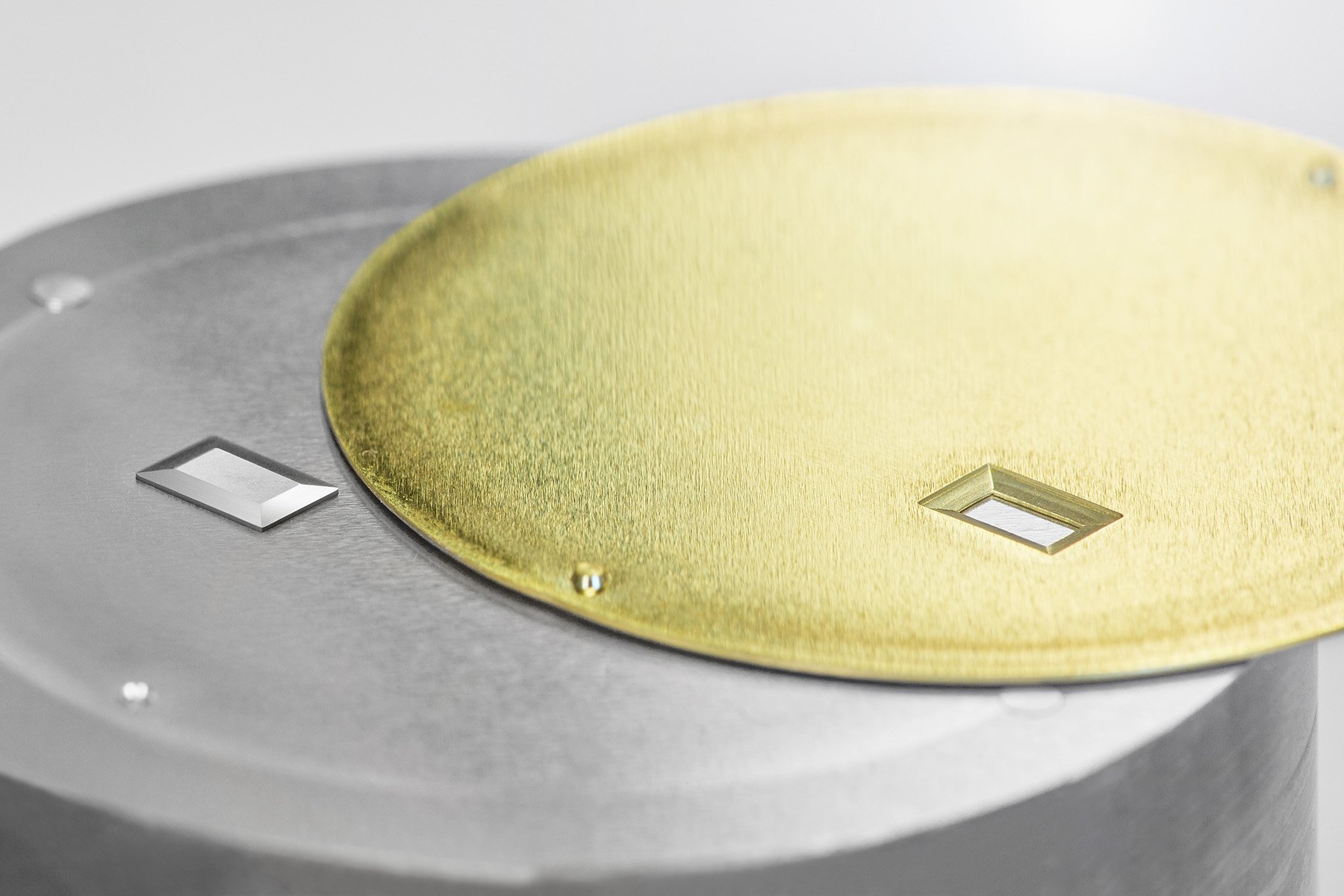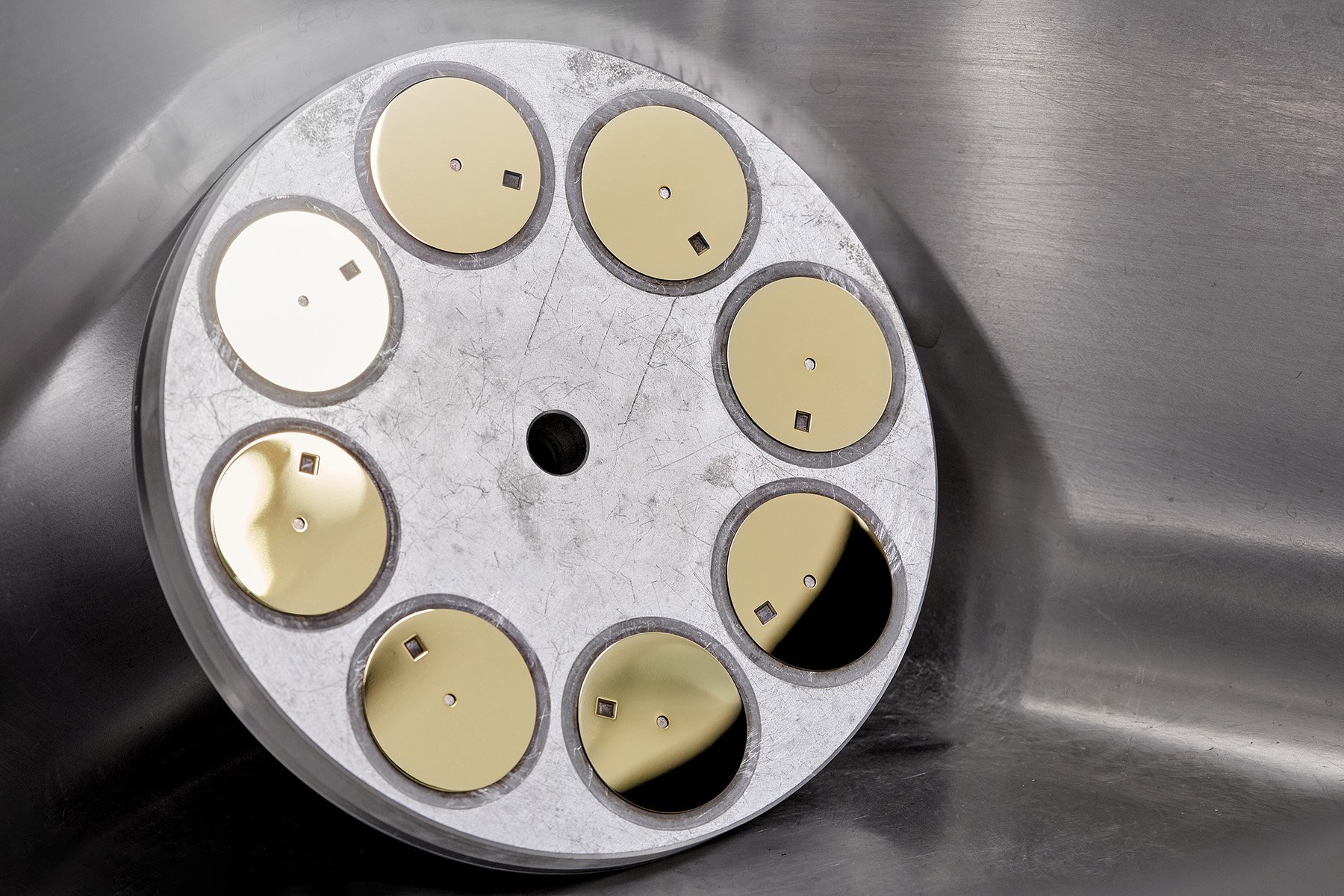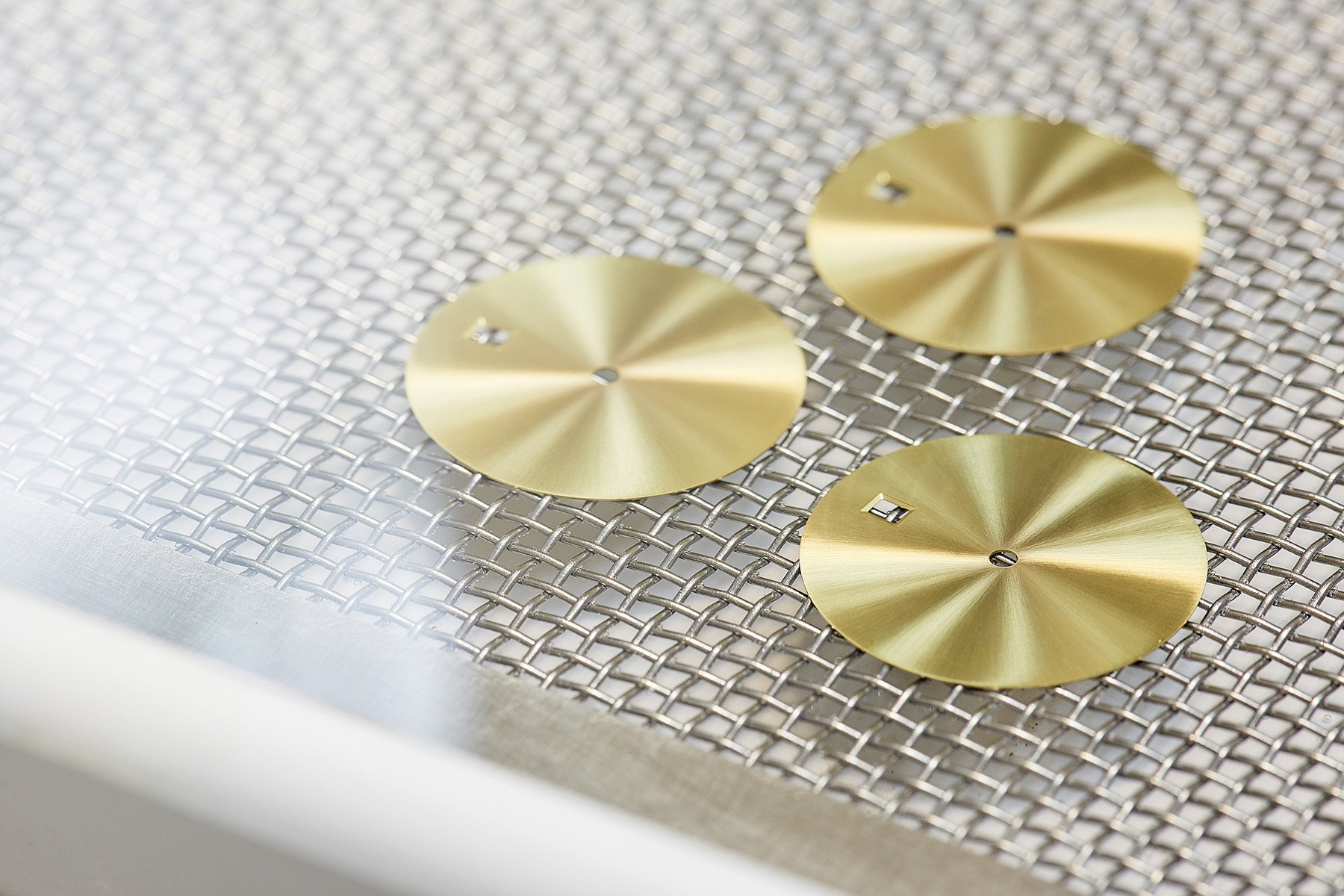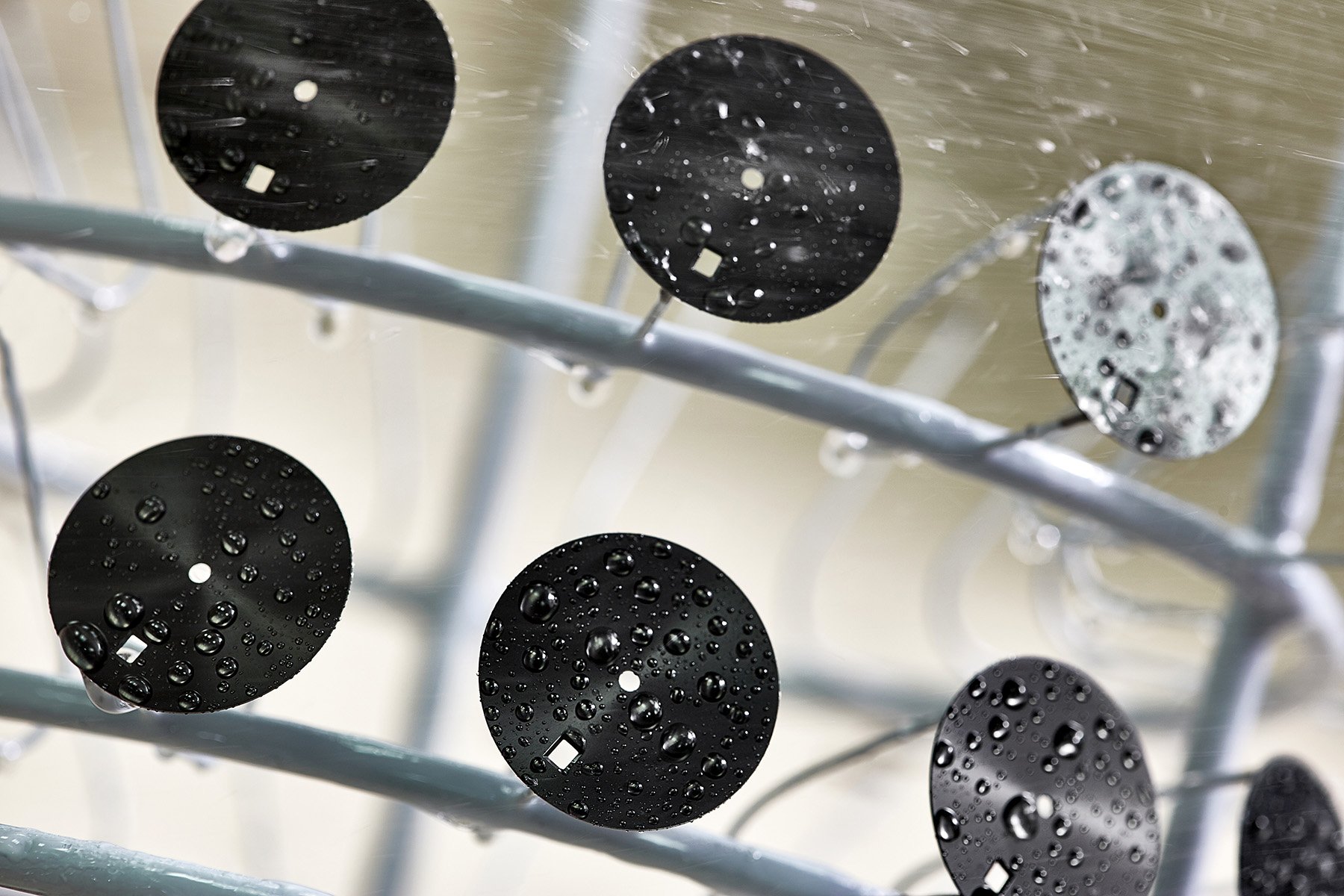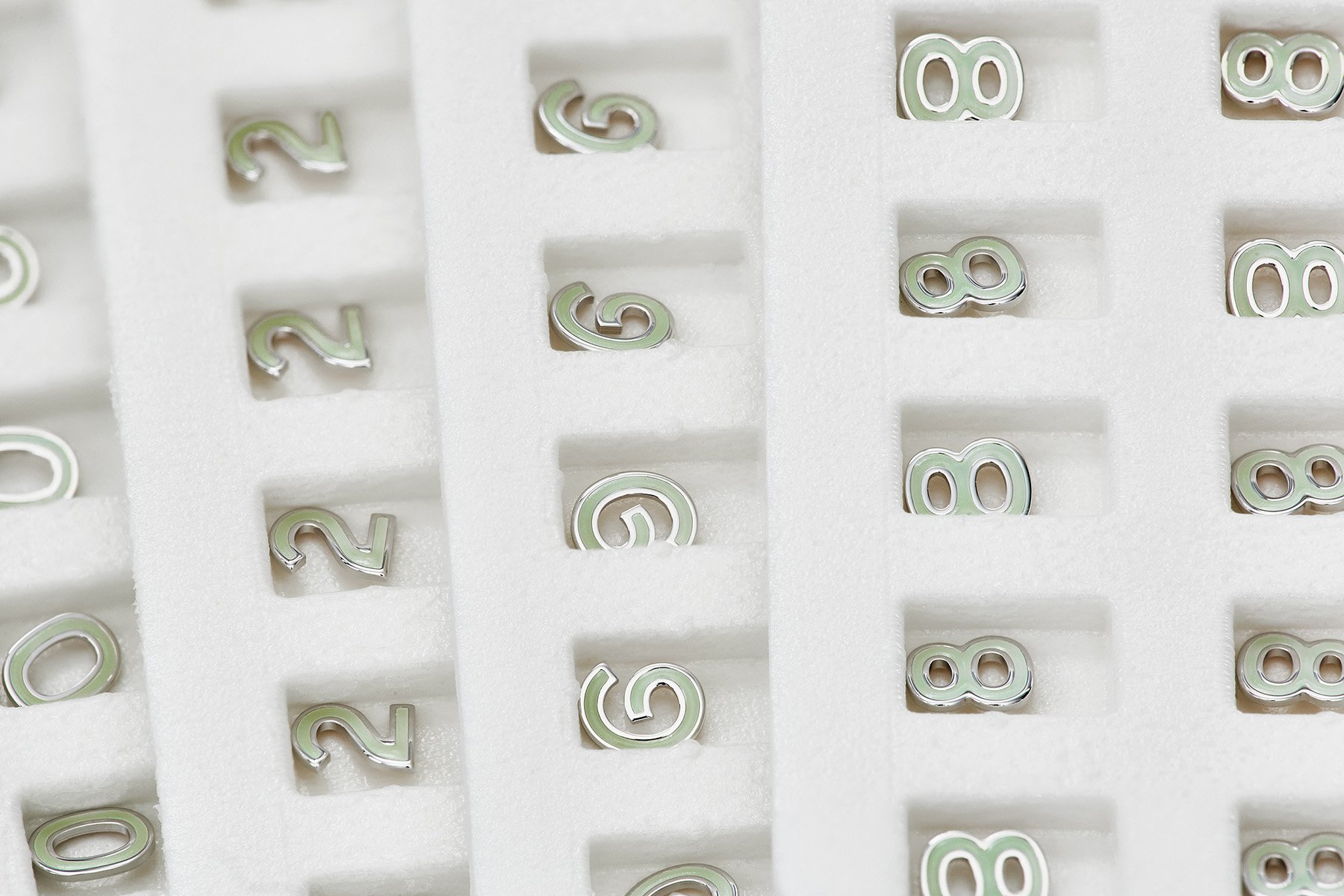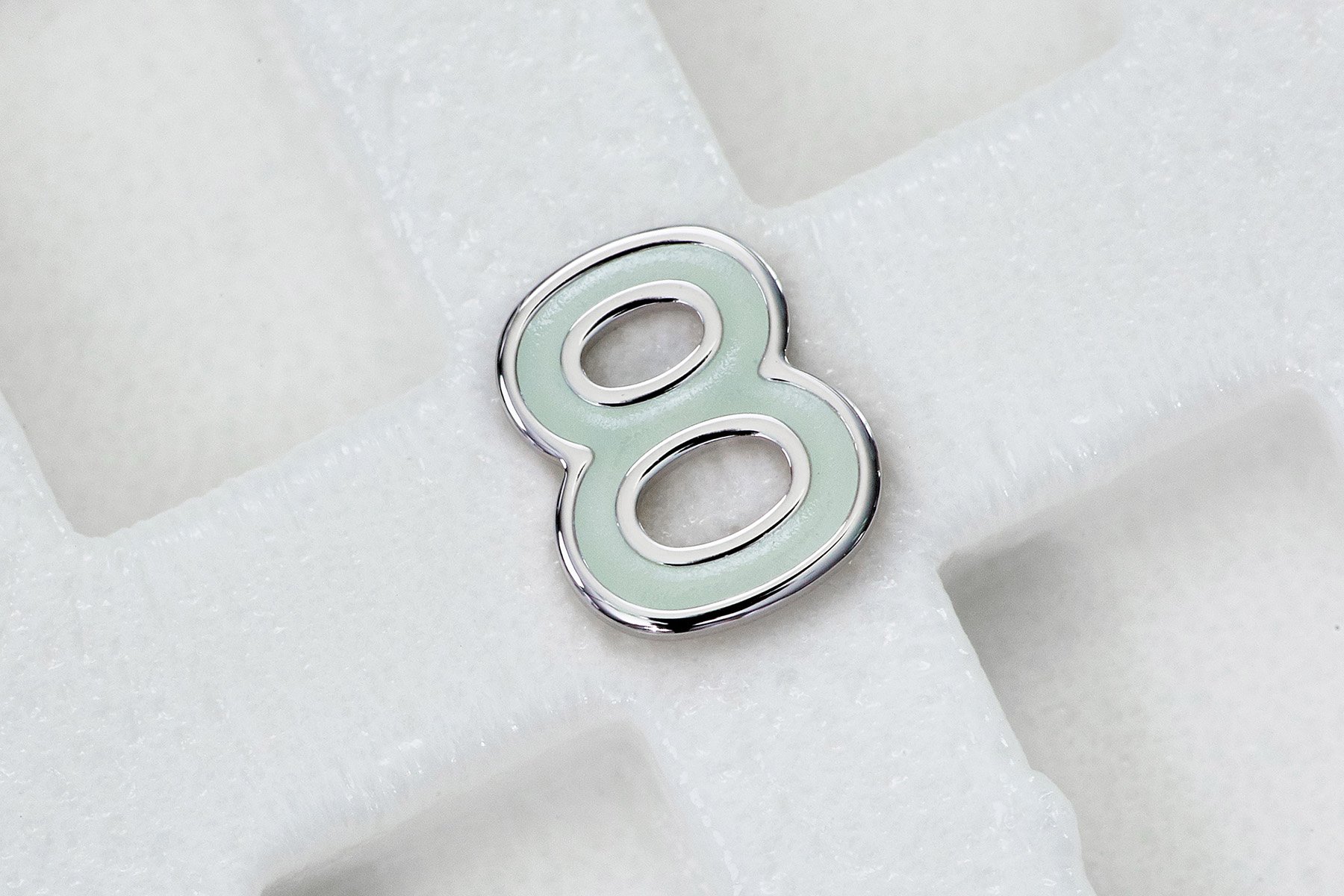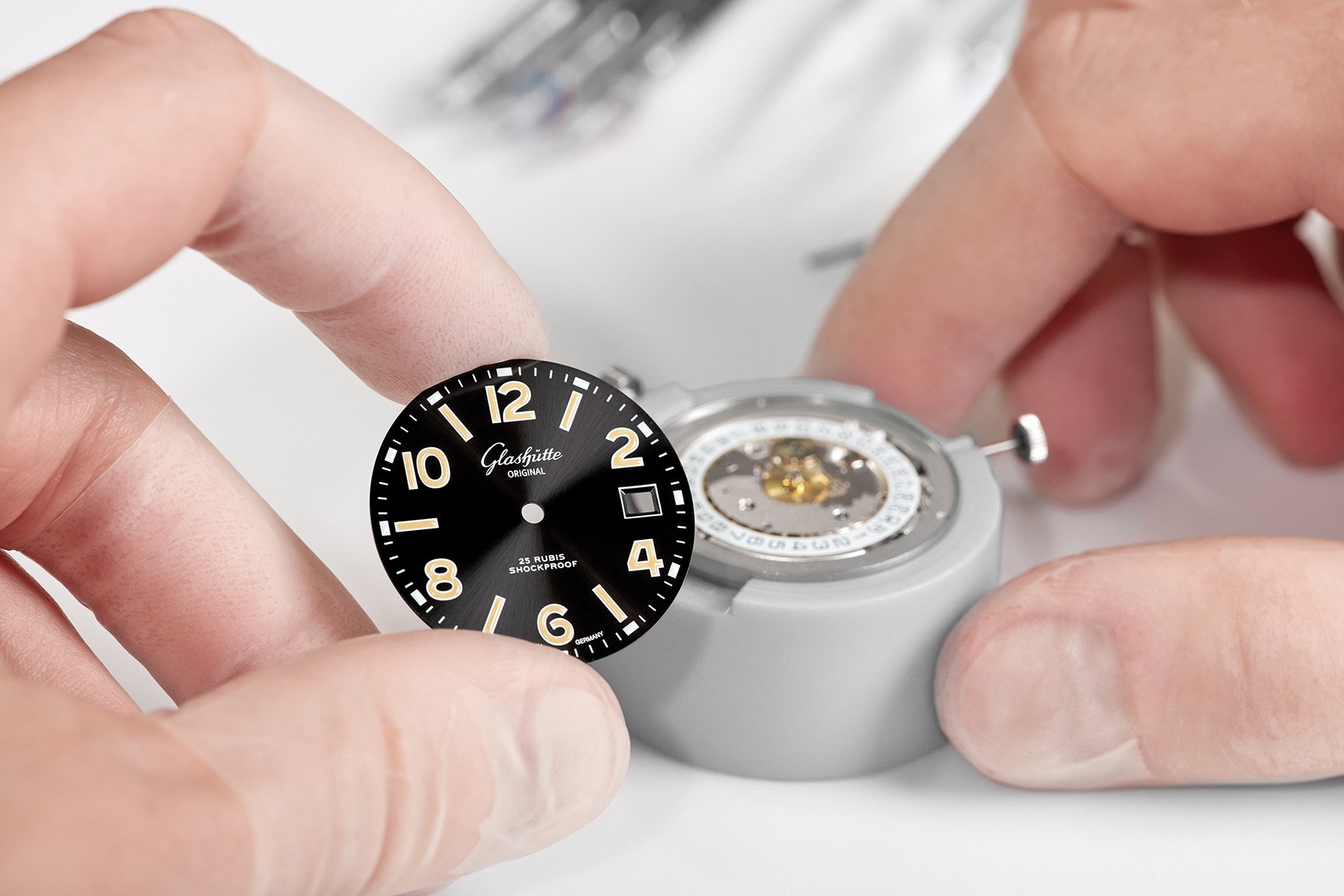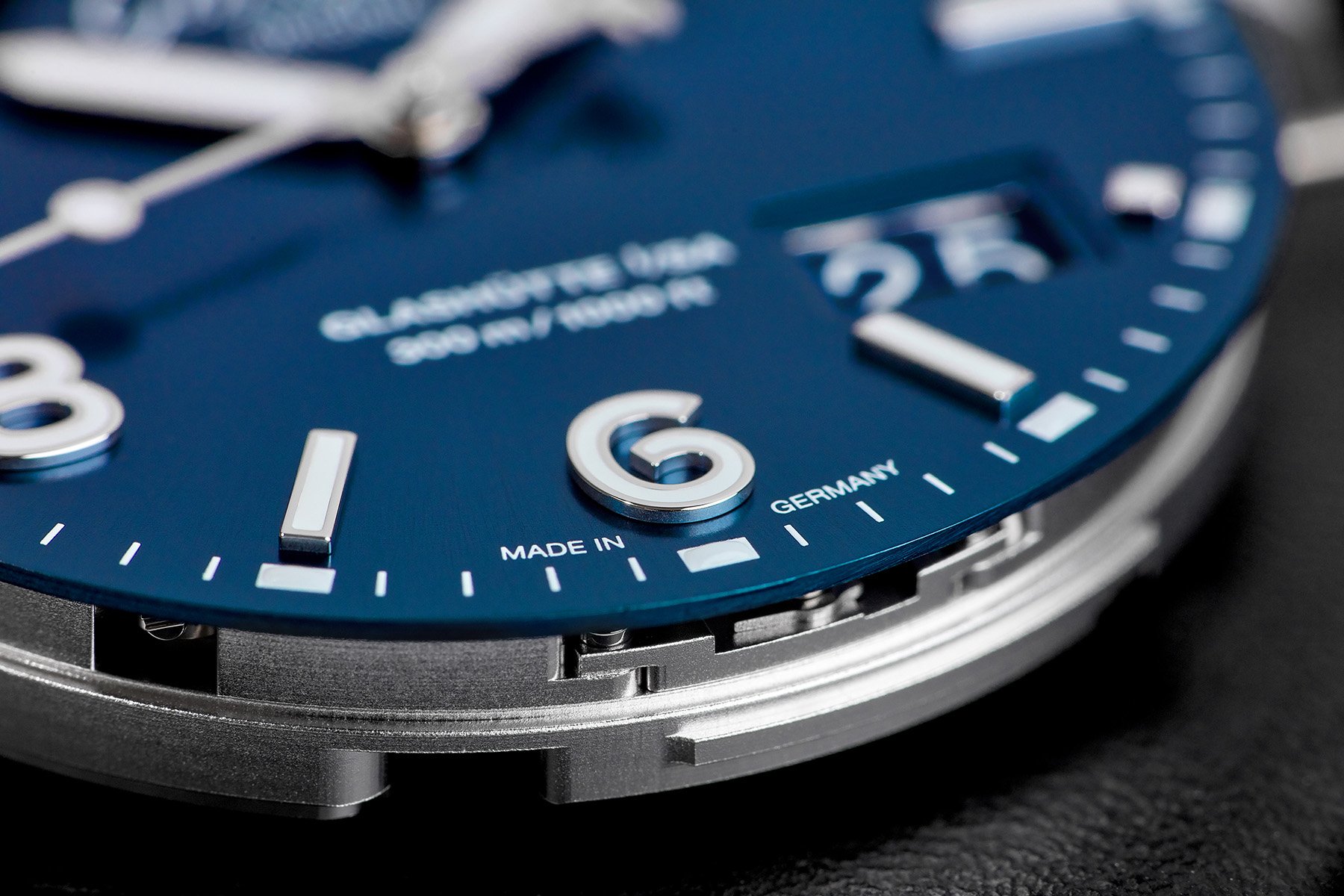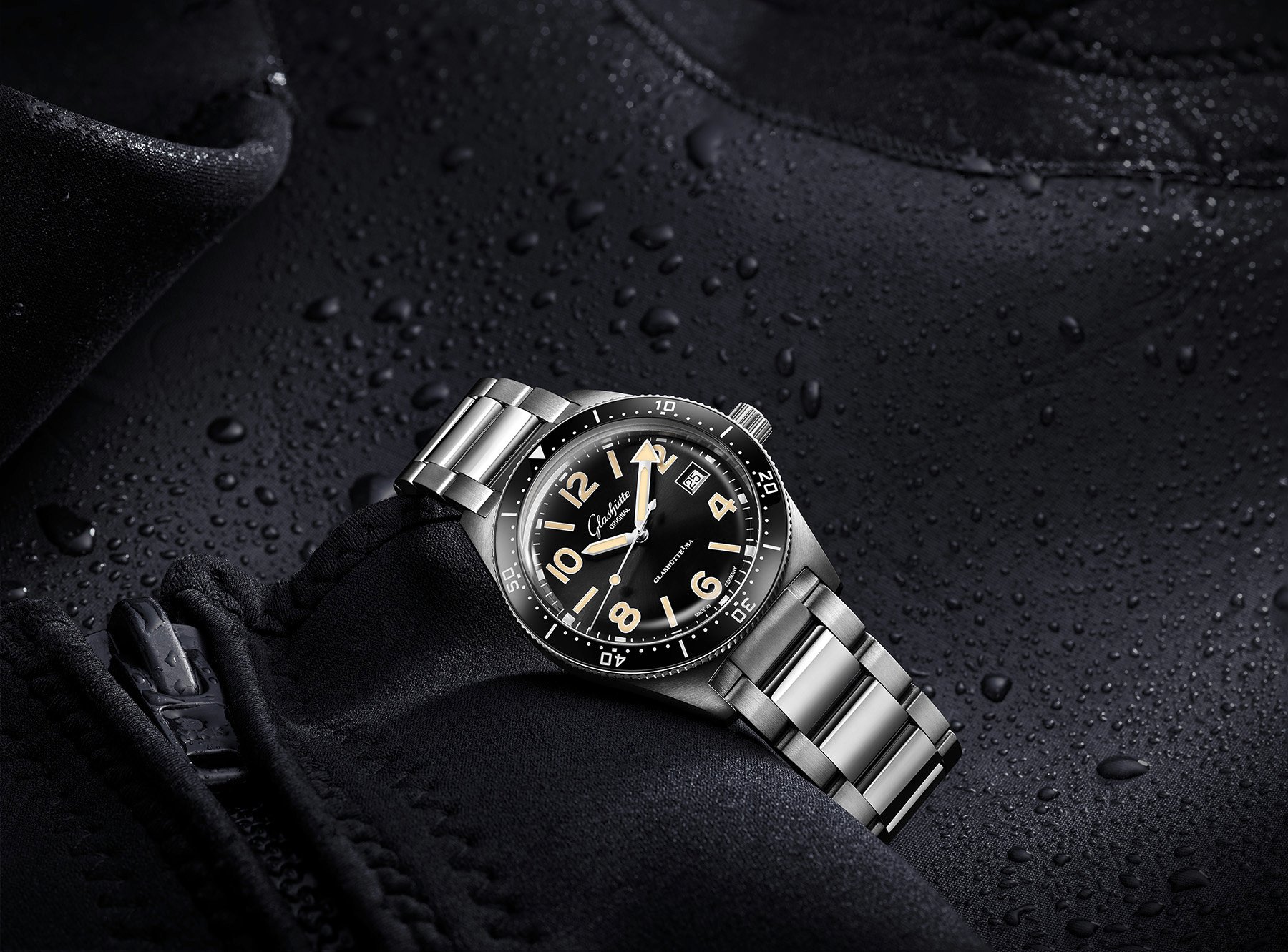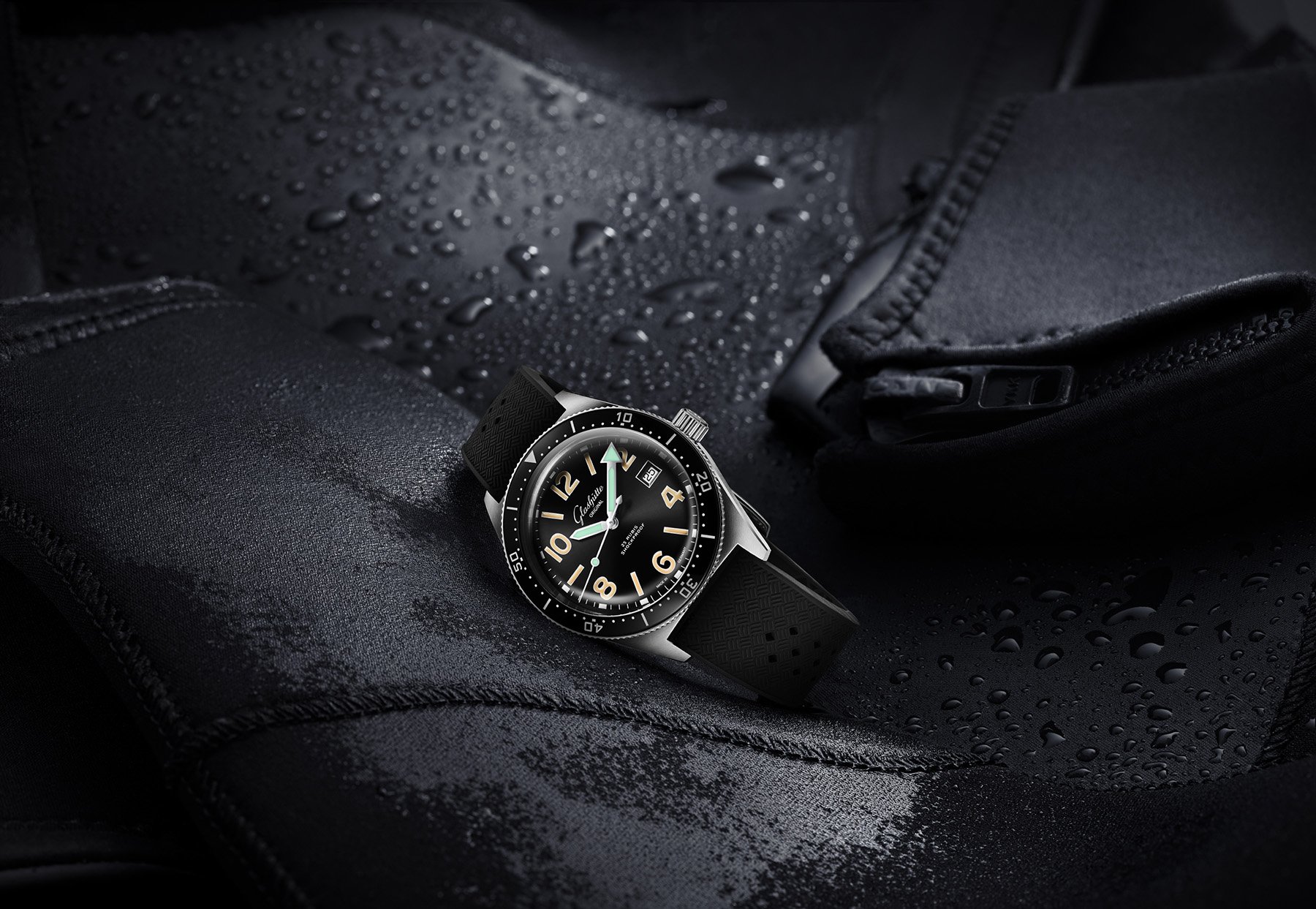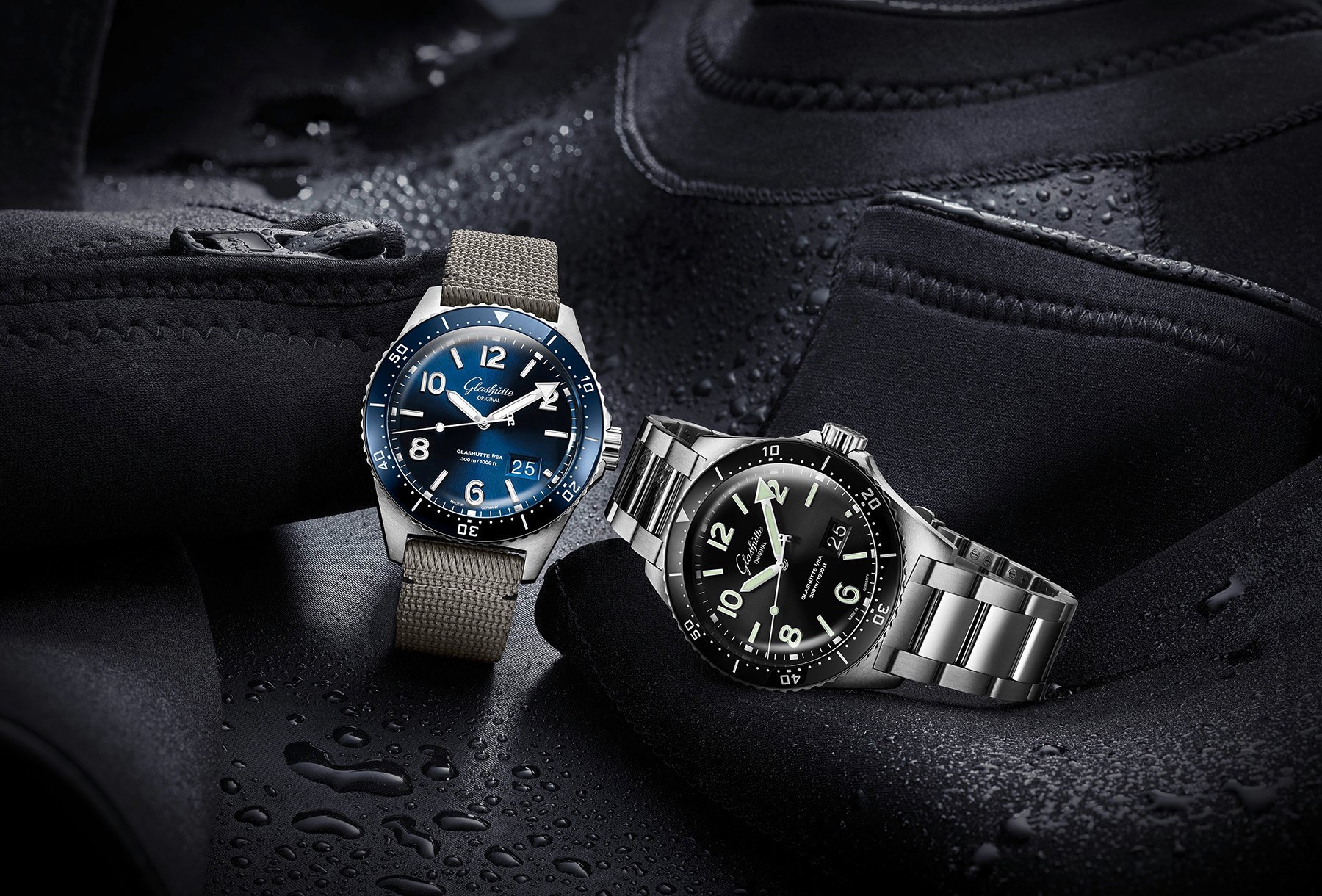Glashütte Original Dials For Divers’ Watches
Back in May of 2019 Glashütte introduced their SeaQ model collection as part of the Spezialist range of watches. Based on a legendary diver from 1969, the Saxon brand launched a full new collection with a pretty distinct and different look. Recently we got an inside look into the dial production for the SeaQ collection.
The design of the Glashütte Original SeaQ models stands out compared to other watch families within the Glashütte collection. When the watches were introduced in May 2019, many people were happy to see the return of a sports watch in the Glashütte Original collection. Fast forward eight months and we get some news from Glashütte about the SeaQ collection. No new models. No technical updates. But something else. Something far more exciting, from a journalist’s perspective. A look inside the process of dial manufacturing for the SeaQ collection. It’s a chance to get an idea of the process of dial production and a nice opportunity to take a closer look at the design of the SeaQ collection.
Pforzheim, City Of Uhren and Schmuck
While many brands order their dials from contractors, Glashütte produces their SeaQ dials in-house. For a look inside the process of manufacturing of Glashütte dials, we have to go to Pforzheim in the south of Germany. Pforzheim is known as Gold City in Germany and is located in between Karlsruhe and Stuttgart. The city is the German capital of “Uhren und Schmuck,” or watches and jewelry in English. Brands like Stowa, Laco, and Aristo are from Pforzheim and a lot of the German representative offices of Swiss watch brands are also there.
The post-war architecture and industrial feel
The last time I visited Pforzheim was in 2013 when Fratello founder Robert-Jan and I were on our way to Munich for the Goldene Unruh 2013 watch award show. On our way, we had a stopover at Pforzheim.
We headed out to find schnitzels and beer in the center of Pforzheim — a Fratello tradition/mandatory requirement. Lehners Wirsthaus turned out to be the place for just that. What stuck with me the most during our stay, are the very industry-focused and almost eerie parts of Pforzheim. With a bit of research, I found out that the city of Pforzheim was heavily bombed in World War II by the allied forces. It explains the post-war architecture and industrial feel you get in large parts of the city.
A Brief History
Somewhere in that industrial part of the city is the Glashütte Original Zifferblattmanufaktur. This specialist department of GO started out as the TH Müller company. TH Müller company was founded in 1922 and didn’t start producing watch dials until the 1950s. One of its clients was the East German VEB Glashütter Uhrenbetriebe (GUB) that was formed post-war in 1951 from the watch companies based in Glashütte. TH Müller produced high volumes of watch dials for the East German company. Although the VEB Glashütter Uhrenbetriebe was obviously in no way a luxury watchmaker, the quality of their watches and more specifically their dials was top notch.
…the watch industry in Glashütte was privatized and grew into the home of German watchmaking as we know it today.
For decades TH Müller was the supplier of all the dials for the VEB Glashütter Uhrenbetriebe. After the fall of the Berlin Wall, the watch industry in Glashütte was privatized and grew into the home of German watchmaking as we know it today. In 1994 when Glashütte Original was founded, TH Müller was the logical supplier of the new brand’s dials. Twelve years later in 2006, the Swatch Group decided to take over TH Müller. After that, the company produced watch dials exclusively for Swatch Group brands. And so it would have been totally normal to find a TH Müller dial in an Omega, a Blancpain, or a Glashütte Original in those days. In 2012 Swatch Group committed TH Müller and its resources to Glashütte Original exclusively. From then on, it was known as the Glashütte Original Zifferblattmanufaktur and made dials for GO and GO alone.
The three Options In The SeaQ Collection
With the update Glashütte sent us about the SeaQ dials, a question popped up in my mind. I decided to write this article about the differences in dials, rather than take you through the production process. The SeaQ collection consists of two regular models, the SeaQ and the SeaQ Panorama Date. Next to that, there is a limited edition SeaQ 1969. The 1969 is a recreation of the original Glashütte Spezimatic Type RP TS 200 upon which the entire collection was based.
In my previous article about the introduction of the SeaQ collection, I focused on the SeaQ and the SeaQ 1969. I left out the SeaQ Panorama Date. I did that partly because of historical context and partly because I simply like the design of the SeaQ and SeaQ 1969 better. At least that’s what I thought. But by doing so I missed an important detail in the production of the dials.
A Salute To Sixties East German Design
Let’s take a closer look at the design of the SeaQ models especially the dials of the watches. As mentioned the entire collection was inspired by the Glashütte Spezimatic Type RP TS 200 from 1969 and therefore salutes sixties East German design. I mentioned in my previous article that the design is something to get used to and I still believe that. Firstly, because it is different compared to the usual Glashütte Original models that are more refined and classical looking. Secondly, because there aren’t a great number of current-day divers that look like the SeaQ. The retro looks combined with the big Arabic numerals are not your standard dive watch style in 2020. The first watch I can think of that has a resemblance to the SeaQ is the current TAG Heuer Autavia. Although that is not a diver’s watch and it’s nowhere near as bold as the SeaQ.
…the layout is very simple…
So the design is not something we see a lot nowadays but it also not unfamiliar to our eyes. I personally like the design of the dial. I had to get used to the very functional design of the watch, with its huge numerals. But for a diver’s watch, this makes sense. The thick hands are in line with the huge numerals and although the layout is very simple, it makes for a pretty ‘in your face’ design.
The SeaQ versus the SeaQ Panorama Date
If we compare the regular SeaQ and the SeaQ Panorama Date models, there are quite a few differences. The regular SeaQ is considered as the vintage-looking watch that was inspired by the 1969 original. Conversely, the Panorama Date is considered a more modern take on the original. First off the SeaQ Panorama Date is the bigger watch. At a little over 43mm, the Panorama date is substantially bigger than the regular 39.5mm model.
…the Panorama Date is available with a black dial or a blue dial.
The SeaQ Panorama Date is powered by the in-house produced automatic 36-13 movement and features a big date complication at the 4 o’clock position. Meanwhile, the SeaQ model is powered by the in-house produced automatic 39-11 movement and features a “regular” date display at 3 o’clock. While the regular SeaQ comes with a black dial only, the Panorama Date is available with a black dial or a blue dial.
The Dial Design of the SeaQ Models
What intrigued me more in the context of the dial making process are the subtle differences between the designs. I ended up wanting to see a watch that is essentially a combination of the two. I much prefer the 39.5mm size of the SeaQ over the 43mm of the SeaQ Panorama Date. The smaller size is something I prefer when it comes to wearing the watch on a daily basis.
I like the layout of the SeaQ over the SeaQ Panorama Date.
A second thing is the date display. I am not a fan of big date displays. I love having a date complication on my watch as I check the date regularly but there is no need for a very prominent date display, in my opinion. And before you say, “but both the big display serves a functional purpose,” I know that. But I don’t dive and I don’t need a big date display despite loving the sport looks of a diver’s watch on my wrist. So I like the layout of the SeaQ over the SeaQ Panorama Date.
The Differences In Production Of The Dial
I do love the fact that the date disc of the SeaQ Panorama Date is the same color as the dial with the date printed in white. On the SeaQ the date is printed in black on a white disc. Although it is very common to do so, I much prefer the solution chosen for the Panorama Date. On to the color of the hands and numerals. The SeaQ has the vintage-inspired Super-LumiNova in sand or ecru color whereas the Panorama Date features the more regular green Super-LumiNova hands and numerals on the version with the black dial. The version with the blue dial has white hands and numerals. I much prefer the vintage looks of the SeaQ as it fits the overall style of the design. And I love that look.
…the printed version might be closer to the original…
On the SeaQ, the numerals, indexes, and text are all printed. The SeaQ Panorama Date is different because Glashütte Original chose to apply the numerals and indexes. Not only does it give the dial a 3D effect, but it also gives the watch a more exclusive look. Seeing the craftsmanship that goes into creating a dial with applied numerals and indexes is not only amazing, but the end result is something I really prefer over the printed numerals and indexes. Yeah sure, the printed version might be closer to the original but my answer to that would be, “If you want something closer to the original, go hunt down the limited edition SeaQ 1969.”
Final Thoughts
A long story short? I love the Glashütte Original SeaQ collection. The more I see the design, the more I like it. At first, I wasn’t sure about the design because I had my doubts about whether it would be fitting for the luxury Saxon brand. Next to that, the SeaQ is in a very competitive market of divers’ watches around 10,000 Euros. For that kind of money, you have options. But the more I see the design, the more I love it and the more I think there aren’t a lot of options that would actually beat this SeaQ. At €9,700 the SeaQ on a stainless steel bracelet is an incredible buy. The Panorama Date is more expensive at €12,200 and from reading the article you would probably know I prefer the regular SeaQ…with some adjustments.
I understand the idea that the Panorama Date is the more modern watch and the SeaQ is inspired by the original watch from 1969. But, in my opinion, the limited edition SeaQ 1969 is the way to go if you want a true representation of the original. The regular SeaQ could profit from the same dial with applied numerals and indexes as the Panorama Date to give it at even better and more premium look. It makes it a small step further away from the 1960s East-German design and makes it a stunner of a luxury diver’s watch with an amazing dial that is able to hold its own even better with a lot of the current dive watches on the market. And, perhaps most importantly, it is one I would love to wear. Learn more about Glashütte original here.

